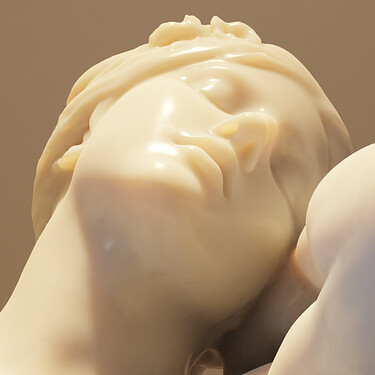Hi,
It would be great if you could log some bugs for these  -)
-)
Regards,
William
Which part are you talking about? SSS or adaptive sampling?
As I understand, human vision is more sensitive to details in the darker values, so it seems strange that Cycles is using the green curve to distribute samples. Red one seems a lot more reasonable. Although my reading of the graphs might be skewed because X axis is in log scale.
And I agree that highlight sampling should be somehow limited. Right now overexposed areas get way too many samples, to the point that it becomes wasteful and only increases the rendertime for the whole image. And it happens in very common situations, for example sunlight coming through the window and shining on a wall.
Human eyes are most sensitive to the green spectrum, reason why Heads up displays (in fighter jets) are green.
Since the human lived in forest and nature which is predominantly green (when its not fall or winter), since we have a tri-chromatic vision enabling us do differentiate edible food from poisonous ones etc.
Small info dump 
I was referring to the SSS but if you also have a bug for the adaptive sampling it is good to get a bug for that also 
You guys are awesome! Thank you, you’ve done something huge
Ok, here’s the report for SSS:
https://developer.blender.org/T92374
Although Christensen-Burley looks much better in this case, I’m not sure if it’s physically correct either. Also sometimes I would prefer how Random Walk looks. For example on this statue it gives better definition to the shape.
And also a task for adaptive sampling:
https://developer.blender.org/T92375
Excellent thank you these will be very helpful in fixing the issues.
Personally I’m a Random Walk fan since the moment it was introduced to Cycles years ago, and I’m glad it has become the default SSS method. But having a choice to achieve speedier rendering and/or stylized looks is a good thing.
I’m wondering though: what’s the difference between the standard Random Walk and the Fixed Radius implementation?
“Random Walk Fixed Radius” is designed to mimic the way “Random Walk” worked prior to the Cycles-X re-write.
“Random Walk” now does stuff more accurately with anisotropy, index of refraction, and albedo inversion. I’m not exactly sure how to describe all of these because I don’t properly understand them. You can find information about it here:
https://developer.blender.org/D11965
https://developer.blender.org/rB7811c11472302948015b94137c8918f0292936d4
https://developer.blender.org/D12608#329590
https://graphics.pixar.com/library/PathTracedSubsurface/
Frankly the second picture looks miles better to me. The first one looks washed out, like some sort of butter sculpture, and the face features are partly lost to weird light bleeding. The second render could be a photo detail of an actual sculpture, whereas the first immediately strikes me as cgi. I’m not a random walk lobbyist by any means but this comparison needs no words
(I misread your post, this is basically me agreeing lol)
You are absolutely right. And I also love how realistic random walk looks.
But sometimes (many times) when I do stylized art or just want less artifacts and a speedier render I would choose C-B.
So I’m glad it’s back and I hope it stays there. 
Yeah I didn’t mean this post as an argument to remove CB, I know it’s been a hot topic recently but I’m all for keeping tools around as long as they’re useful.
If we speak about realism, can we have a comparison to real reference photo and not Christensen-Burley vs Random Walk?
This is the expected behaviour because Christensen-Burley allows more light to pass through the entire object; perfect for translucent materials such as plastics.
Random Walk is ideal when the light should only scatter a little through the surface, such as skin, milk, stone, etc… Due to this behaviour, random walk naturally shows more contours (AO)
Christensen-Burley and Random Walk work differently because of their algorithm.
3D does not mean that everything has to be 100% physically correct, we also need creative possibilities!
What is already real? Photos are also edited ; )
Ah, thanks. I already knew about the SSS Anisotropy and IOR additions, love those options. But now I also know the difference between RW and the Fixed Radius variation.
Christensen-Burley SSS was designed and fit to real-life data specifically to render human skin. What I mean by “real” photo - is that it is not just an image, but also all lighting, camera and material properties are well measured in the scene and color transforms are well known.
Well, you don’t need to choose over rendering methods then - just find what you like the most. It’s all artistic after all.
Christensen-Burley is a fit of Random Walk on a flat plane, not specific to human skin.
When not using a flat plane, it’s can start to glow due to lack of energy conservation.
You’re absolutely correct. But I would prefer to have clear and predictable controls to tweak material properties, rather than juggle two different algorithms. That would be better for both artists and developers.
It’s enough to change the position pass to be aliased. For other reading this, are you relying on it being anti-aliased now, or can we just change it?
I know in general users want maximum control and be able to configure filtering for every pass, but for Blender 3.0 we don’t have time to make big changes here. So wondering what we can do quickly to improve this for the release.

